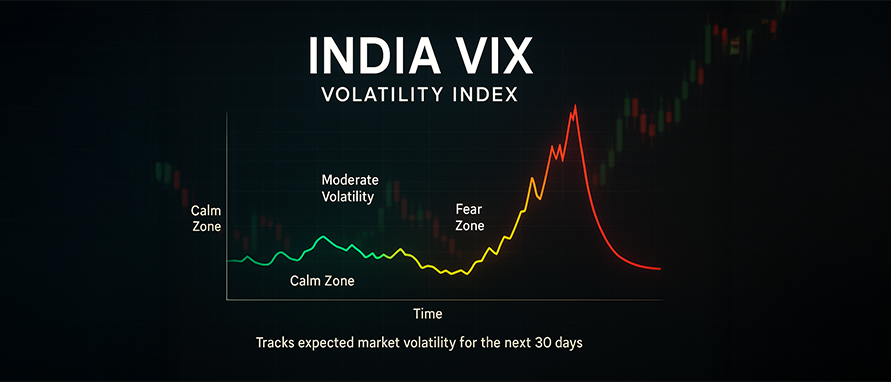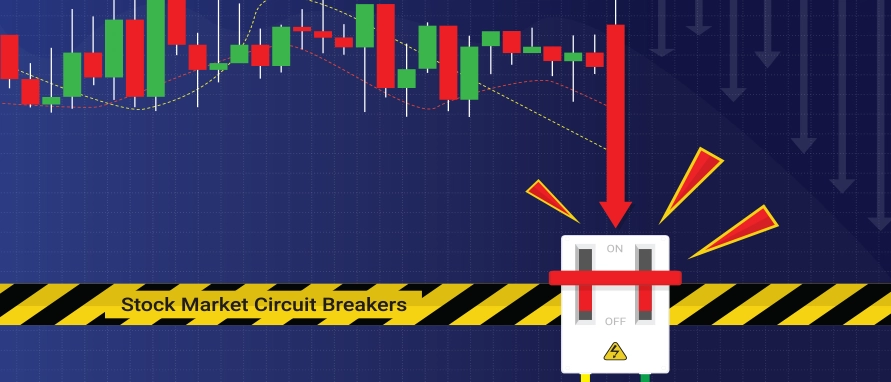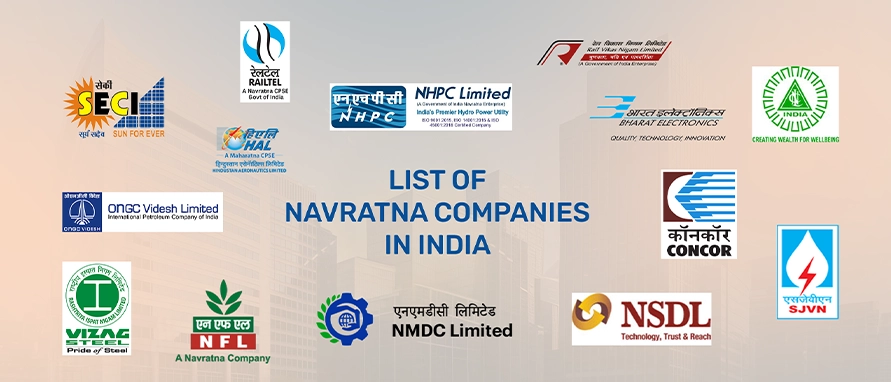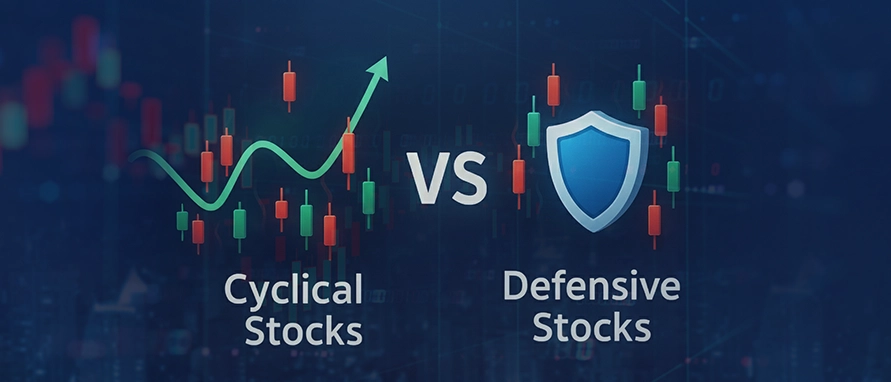-
Our ProductsLoansCardsInsuranceInvestmentsStock MarketElectronics MallCIBIL ScoreKnowledge CentreAcademyCalculators
- Our Services
- My Account
- Discover
What is the Difference Between Top Line and Bottom Line Growth
Top line and bottom line growth are two essential indicators of a company’s financial performance. While they both appear on a company's profit and loss statement, they represent distinct elements of the business. The top line refers to a company's revenues or gross sales, whereas the bottom line indicates its net profit after all expenses. Knowing the difference between the two helps stakeholders understand whether a business is growing through higher sales, better cost control, or both.
What Is Top Line Growth
Top line growth refers to the increase in a company’s revenue or gross sales over a specific period. It represents the total income generated from the sale of goods or services before deducting any costs or expenses.
An increase in top line typically means that the company is selling more products, raising prices, entering new markets, or expanding its customer base. It is a strong indicator of demand and business expansion.
Example of Top Line Growth
If a company earned ₹50 crore in revenue last year and ₹60 crore this year, it has experienced a 20% top line growth.
Top Line Formula:
Top Line = Total Revenue or Gross Sales
What Is Bottom Line Growth
Bottom line growth refers to the increase in a company’s net profit — the amount left after deducting all operational expenses, interest, depreciation, taxes, and other costs from the total revenue. The term “bottom line” comes from the last line in the income statement.
Bottom line growth may result from higher revenues, but it can also come from cost-cutting measures, operational efficiencies, or reduction in tax or interest liabilities.
Example of Bottom Line Growth
If a company had ₹5 crore in net profit last year and ₹8 crore this year, its bottom line has grown by 60%.
Bottom Line Formula:
Bottom Line = Total Revenue - Total Expenses
Key Differences Between Top Line and Bottom Line
Understanding these differences is crucial for investors, analysts, and management when evaluating a company’s performance:
| Aspect | Top Line | Bottom Line |
|---|---|---|
| Meaning |
Revenue or gross sales |
Net profit after all expenses |
| Location in statement |
First line of the income statement |
Last line of the income statement |
| Indicator of |
Sales growth and market expansion |
Profitability and cost efficiency |
| Affected by |
Sales volume, pricing, market demand |
Revenue, costs, taxes, interest, etc. |
| Focused by |
Marketing and sales strategies |
Operations, finance, and management |
Why Top Line Growth Doesn’t Always Mean Higher Profits
A company can grow its revenue while still reporting stagnant or falling profits. This happens when increased sales are accompanied by rising costs, inefficient operations, or high debt servicing.
For example, if a company spends heavily on marketing and infrastructure to boost sales, it may grow its revenue but fail to improve its bottom line if those expenses outweigh the gains.
Hence, top line growth without corresponding bottom line growth may not always be a sign of financial strength.
Why Bottom Line Growth Matters for Investors
Bottom line growth directly relates to the profitability of a company. Investors often focus on this metric because:
It reflects how efficiently a company converts revenue into actual profit
It impacts earnings per share (EPS), which affects stock prices
It indicates how well management is controlling costs and generating shareholder value
Sustainable bottom line growth is generally seen as a positive signal for long-term investment.
Which Is More Important: Top Line or Bottom Line
Both are important, but their significance depends on the context:
For early-stage companies, top line growth is often prioritised as they work to expand market share.
For mature companies, bottom line performance becomes more crucial as markets stabilise and efficiency drives profitability.
Ideally, a healthy company shows growth in both areas — strong revenues and controlled expenses.
Common Strategies to Improve Each Line
Strategies split between top line and bottom line include:
For Top Line Growth:
Launching new products or services
Entering new markets or customer segments
Enhancing marketing and sales efforts
Increasing pricing (where competitive)
For Bottom Line Growth:
Reducing operational costs
Improving supply chain efficiency
Automating repetitive tasks
Managing debt and taxes efficiently
Companies should align their growth strategies based on which line needs focus, without compromising long-term stability.
Conclusion
Top line and bottom line growth are key indicators of a company’s financial health, though they reveal different stories. Top line growth shows business expansion and market performance, while bottom line growth reflects profitability and cost control. For a well-rounded view of a company's success, both metrics should be analysed together. Understanding their difference helps investors and managers make informed decisions based on growth quality and sustainability.
Disclaimer
This content is for informational purposes only and the same should not be construed as investment advice. Bajaj Finserv Direct Limited shall not be liable or responsible for any investment decision that you may take based on this content.
FAQs
What is more important — top line or bottom line growth?
Top line growth reflects a company’s ability to expand revenue, while bottom line growth indicates profitability, and although both are important, investors often prioritise bottom line growth since it directly measures financial health.
Can a company have growing revenue and falling profits?
A company can experience growing revenue and still report falling profits if its expenses, such as production costs, interest, or taxes, increase at a faster pace than its revenue growth.
Why is the bottom line crucial for investors?
The bottom line is crucial for investors because it represents the company’s net profit, which directly impacts dividends, earnings per share (EPS), and overall stock valuation.
How can companies improve their bottom line?
Companies can improve their bottom line by reducing operating costs, improving efficiency, optimising tax strategies, managing debt effectively, and increasing productivity.
Is high top line growth always good?
High top line growth is not always beneficial, as revenue expansion driven by excessive spending or unsustainable strategies may reduce profitability and harm long-term financial stability.
With a Postgraduate degree in Global Financial Markets from the Bombay Stock Exchange Institute, Nupur has over 8 years of experience in the financial markets, specializing in investments, stock market operations, and project management. She has contributed to process improvements, cross-functional initiatives & content development across investment products. She bridges investment strategy with execution, blending content insight, operational efficiency, and collaborative execution to deliver impactful outcomes.
Related Blogs

Geetanjali Lachke

Roshani Ballal

Geetanjali Lachke

Roshani Ballal

Roshani Ballal

Geetanjali Lachke

Geetanjali Lachke

Nupur Wankhede

Anshika

Nupur Wankhede

Nupur Wankhede

Nupur Wankhede

Nupur Wankhede

Nupur Wankhede

Nupur Wankhede

Geetanjali Lachke

Geetanjali Lachke

Roshani Ballal

Nupur Wankhede

Anshika

Anshika

Nupur Wankhede

Nupur Wankhede

Nupur Wankhede

Nupur Wankhede

Nupur Wankhede

Nupur Wankhede

Nupur Wankhede

Nupur Wankhede

Nupur Wankhede

Nupur Wankhede

Nupur Wankhede

Nupur Wankhede

Roshani Ballal

Anshika

Nupur Wankhede

Geetanjali Lachke

Roshani Ballal

Nupur Wankhede

Nupur Wankhede

Anshika

Anshika

Nupur Wankhede

Anshika

Anshika

Nupur Wankhede
.webp)
Nupur Wankhede

Nupur Wankhede

Nupur Wankhede

Nupur Wankhede

Nupur Wankhede

Nupur Wankhede

Nupur Wankhede
.webp)
Nupur Wankhede

Nupur Wankhede

Nupur Wankhede

Nupur Wankhede
-in-India.webp)
Nupur Wankhede

Nupur Wankhede

Nupur Wankhede

Anshika

Nupur Wankhede

Nupur Wankhede

Anshika

Anshika

Nupur Wankhede

Nupur Wankhede

Nupur Wankhede

Nupur Wankhede

Nupur Wankhede

Nupur Wankhede

Nupur Wankhede

Nupur Wankhede

Nupur Wankhede

Nupur Wankhede

Anshika

Nupur Wankhede

Nupur Wankhede

Nupur Wankhede

Nupur Wankhede

Anshika

Nupur Wankhede

Nupur Wankhede
-Meaning-Importance.webp)
Nupur Wankhede

Anshika

Nupur Wankhede

Nupur Wankhede

Nupur Wankhede

Anshika

Nupur Wankhede

Nupur Wankhede

Nupur Wankhede

Geetanjali Lachke

Geetanjali Lachke

Geetanjali Lachke

Anshika

Anshika

Nupur Wankhede

Nupur Wankhede
-portfolio.webp)
Nupur Wankhede

Anshika

Roshani Ballal

Geetanjali Lachke

Geetanjali Lachke

Geetanjali Lachke

Geetanjali Lachke

Geetanjali Lachke

Roshani Ballal

Roshani Ballal

Geetanjali Lachke

Geetanjali Lachke

Geetanjali Lachke

Roshani Ballal

Roshani Ballal

Geetanjali Lachke

Roshani Ballal

Roshani Ballal

Roshani Ballal

Roshani Ballal

Roshani Ballal

Roshani Ballal

Roshani Ballal

Roshani Ballal

Roshani Ballal





















































.webp)



.webp)











.webp)




.webp)




































